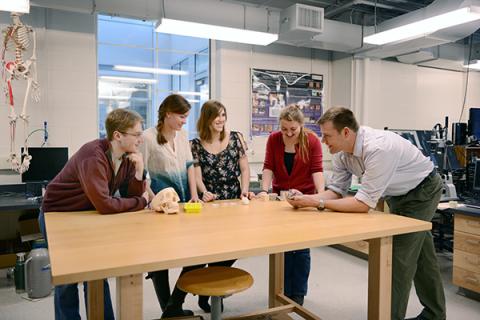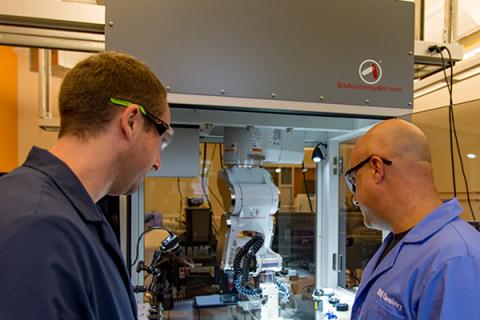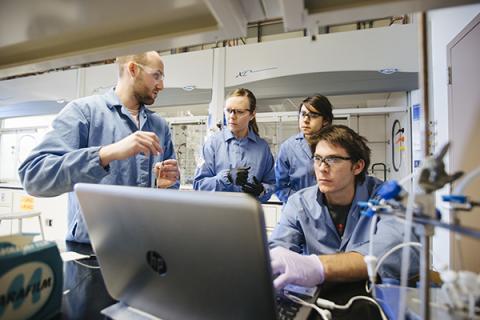
Dr. Doug Van Citters
Dartmouth College Thayer School
More than 1.5 million joint replacements are performed in the U.S. annually; however, 10% of those replacements fail, generally because the polymer used as bearing surfaces is based on a 50-year-old technology and has worn with use, fractured, or degraded. The fundamental need for wear-resistant, tough, and stable materials hasn’t been met. NH BioMade is developing models and fabrication methods for new biomaterials with improved functionality, longevity, and performance of orthopedic implants.
Hypothesis:
Highly localized shearing induced by Equal Channel Angular Extrusion promotes polymer chain interaction and entanglements, which in turn directly impacts particle fusion and structural development at the crystalline scale and achieves regional differences in porosity, conductivity, and modulus.
Intellectual Merit/Novelty:
- Transformative approach to processing semicrystalline polymers with equal channel angular extrusion/processing (ECAE/ECAP)
- ECAE avoids inherent polymer material tradeoffs between mechanical properties
- Modeling will allow optimization of bio-relevant properties including porosity and conductivity.
- Microstructural modifications may be made in the absence of chemical modification.
- Scalable processing combined with additive manufacturing will allow extension to spatially and functionally heterogeneous materials.



